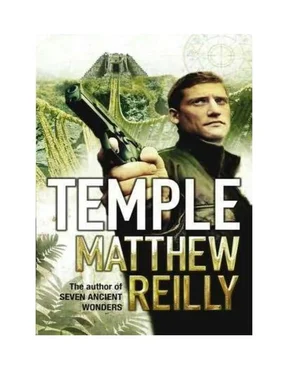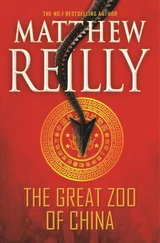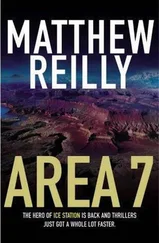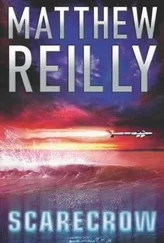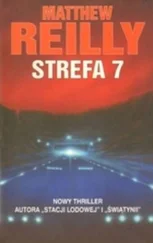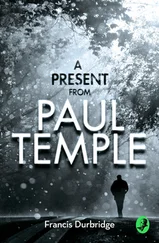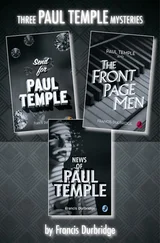“Possibly,’ Chambers said. “Could be Moche. Look at the feline images.’
Gaby Lopez cocked her head doubtfully. “It could be, but that would make it nearly a thousand years old.’
‘Then what about the spiralling path around the crater and the stairs here on the tower?’ Chambers said.
‘Yes… yes, I know. Very peculiar,’
Nash cut in. “I’m glad you both find it so fascinating, but what the hell are you talking about?’
‘Well,’ Chambers said, “it appears that we have a slight anomaly here, Colonel.’
‘What do you mean?’
‘Well, you see, the spiralling path that runs around this crater and the steps on this tower were without a doubt constructed by Incan engineers. The Incans built all sorts of tracks and trails through the Andes and their construction methods are well documented. These two examples bear all the hallmarks of Incan trail construction.’
‘Meaning?’
‘Meaning that the path and the steps were constructed roughly four hundred years ago. This temple, on the other hand, was built long before then.’
‘So?’ Nash said irritably.
‘So, that’s the anomaly,’ Chambers said. ‘Why would the Incans construct a pathway to a temple that they didn’t even build?’
‘And don’t forget the rope bridge,’ Lopez said.
‘No,’ Chambers said. ‘Quite right. Quite right.’ The bookish little scientist looked up fearfully at the rim of the crater.
‘I would suggest we hurry.’
‘Why?’ Nash said.
‘Because, Colonel, it is highly likely that there exists in this area a tribe of natives who will probably not take too kindly to the fact that we have intruded upon their sacred site.’
‘How do you know that?’ Nash said quickly. ‘How do you know that there are natives around here?’
‘Because,’ Chambers said, ‘they are the ones who built the rope bridge.’
‘As Professor Race pointed out earlier,’ Chambers explained, ‘suspension bridges made out of rope decay very quickly over time. A grass-based rope bridge will disintegrate, say, within a few years of its being built. The bridge that we crossed to get to this temple could not have existed four hundred years ago. It was built recently, by someone knowledgeable in Incan bridge-building methods, in all likelihood a primitive tribe of some sort through whom this knowledge has been passed down through the generations.’
Nash groaned audibly.
‘A primitive tribe,’ Race said flatly. ‘Here. Now?’
‘It’s not that improbable,’ Gaby Lopez said. ‘Lost tribes are discovered all the time in the Amazon Basin. As recently as 1987, the Villas Boas brothers made contact with the lost Kreen Akrore tribe in the Brazilian rainforests. Hell, as the Brazilian government even has a policy of sending explorers into the jungle to make contact with Stone Age tribes.
‘As you can imagine, though, a lot of those primitive tribes are extremely hostile to Europeans. It is not unknown for state-sponsored explorers to come home in pieces. Some, like the famous Peruvian anthropologist Dr Miguel Moros Marquez, don’t come back at all—’
‘Hey!’ Lauren said suddenly from over by the portal.
Everyone turned. Lauren was standing in front of the boulder that was wedged inside the squareshaped doorway.
“There’s something written on this.”
Race and the others came over to where she was standing.
Lauren brushed away some chunks of mud that clung to the boulder and Race saw what she was looking at.
Something was engraved in the surface of the great stone.
Lauren scraped away some more mud, revealing something that looked like a letter from the alphabet.
It was an ‘N’.
‘What the hell… ?’ Nash said.
Words began to take shape.
No entrare…
Race recognised them.
‘No entrare’ was Spanish for ‘Do not enter’.
Lauren scraped away some more mud and a whole sentence appeared in the centre of the boulder, crudely scratched into the surface of the stone. It read:
No entrare absoluto.
Muerte asomarse dentro.
Race translated the words in his head. Then he swallowed hard.
“What does it say?’ Nash said.
Race turned to face him. At first, he didn’t say anything.
Then at last he said, ‘It says, “Do not enter at any cost. Death lies within.”’
‘What does “AS” mean?’ Lauren said.
‘I would guess,” Race said, ‘that “AS” stands for Alberto Santiago.’
Back in the village, Doogie Kennedy kicked away a loose rock restlessly. It was dark now and the rain was still falling and he was pissed at having been left back in the village when he really wanted to be up in the mountains with the others.
‘What’s the matter, Doogs?’ Corporal George ‘Tex’
Reichart asked from over by the moat on the eastern side of the village. Reichart was a tall, lanky beanpole of a man. He hailed from Austin and was a genuine, grass-chewing cowboy—hence his nickname. ‘Not gettin’ enough action?’
‘I’m awright,’ Doogie said. ‘I’d just rather be up there in them mountains findin’ whatever it is we’re here to find, than down here babysitting a goddamned village.’
Reichart chuckled softly to himself. Doogie was good value. A bit on the dim side, but keenlkeen as mustard.
What Tex Reichart didn’t know, however, was that behind his small-town Southern drawl, Doogie Kennedy was in fact an exceptionally intelligent young man.
Preliminary testing at Fort Benning had revealed that Doogie had an IQ of 161—which was odd, because he had only just barely graduated high school.
It was soon discovered that, throughout his school years in Little Rock, Arkansas, young Douglas Kennedy’s quiet, God-fearing accountant father had beaten him senseless every evening with a leather strap.
Kennedy Sr had also refused to buy school books for his son and on most nights he would make the boy stand in a dark, three-by-four-foot closet as punishment for serious misdemeanours such as slamming the door too loudly or overcooking his father’s steak.
Homework never got done and young Doogie only managed to complete high school through his extraordinary ability to take in mentally what was said in class.
He joined the Army the day he graduated and he would never return home. What school administrators had seen as just another shy young kid scraping through high school, one sharp old recruiting sergeant had seen as the mark of a determined and brilliant mind.
Doogie was still shy, but given his intelligence, his willpower and the support network of the Army, he soon became a hell of a soldier. He swiftly made Ranger grade, majoring in sniping. The Green Berets and Fort Bragg had followed soon after.
‘Guess I’m just itchin’ for some action,“ Doogie said, as he came over to where Reichart was laying an AC-7V ‘Eagle Eye’ sensor by the eastern moat.
‘I wouldn’t go getting your hopes up,’ Reichart said, flicking on the Eagle Eye’s motion-activated thermal-imaging system. ‘I don’t think there’s gonna be much excitement on this trip—’
There came a loud beep from the motion sensor.
Doogie and Reichart exchanged a quick look.
Then both of them snapped around to scan the dense section of rainforest in front of the motion sensor.
There was nothing there.
Just a tangle of crisscrossing fern fronds and empty forest.
Somewhere nearby a bird whistled.
Doogie snatched up his M-16 and cautiously stepped over the logbridge that spanned the eastern section of the moat. He moved slowly forward, toward the suspect section of jungle.
He reached the edge of the rainforest, flicked on his barrel-mounted flashlight—
—and he saw it.
Saw the glistening, speckled body of the largest snake he had ever seen in his life! It was a thirty-foot anaconda, a monster of a snake, slinking lazily around the gnarled branches of an Amazonian tree.
Читать дальше
